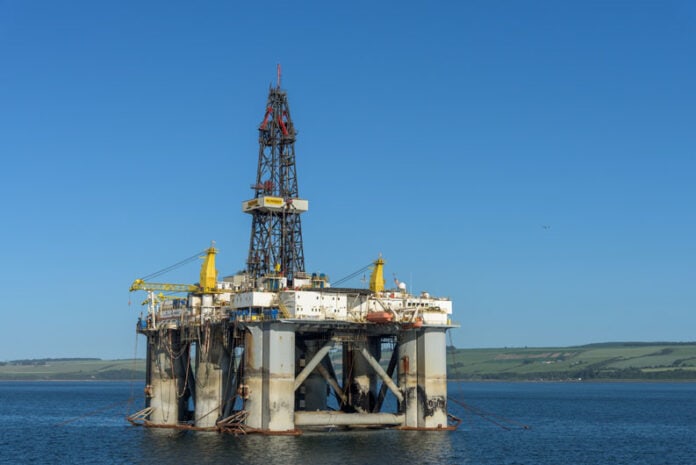An oil rig blowout is a catastrophic event during well drilling or intervention operations that poses significant risks to the environment, human lives, and the overall operation of the rig.
It’s important for drilling professionals to understand the causes of blowouts and the preventive measures that can be taken to prevent them.
What is an Oil Rig Blowout?
An oil rig blowout occurs when uncontrolled pressure builds up in the wellbore, causing a sudden and forceful release of oil, gas, or drilling fluids from the well. Blowouts can result in fires, explosions, and the release of toxic gases, making them extremely dangerous to the workers on the rig and the environment.
Blowouts can also cause significant damage to the drilling rig and can take weeks or even months to be brought under control, incurring high economic costs for the operating company.
One of the most infamous oil rig blowouts was the Deepwater Horizon disaster in 2010, which resulted in a huge marine oil spill.
The blowout, explosion, and subsequent oil spill led to the deaths of 11 workers and extensive environmental damage, with millions of barrels of oil being released into the Gulf of Mexico over the course of 87 days.
Related: What Is Drilling Mud And How It Is Used?
What is the Difference Between a Kick and a Blowout?
A kick is a precursor event to an oil rig blowout. It is an influx of formation fluids, such as oil or gas, into the wellbore, which often occurs when the downhole pressure exceeds the pressure exerted by the drilling mud column. A kick can be seen as a warning sign that a blowout may occur if not controlled promptly.
A blowout, on the other hand, is the uncontrolled release of formation fluids due to the failure to control a kick.
In other words, a kick becomes a blowout when the pressure from the formation fluids overcomes the pressure exerted by the drilling mud column and the well control procedures fail.
For example, during the Ixtoc I oil well blowout in 1979, a kick occurred when drilling mud circulation was lost.
The crew’s inability to control the kick led to the blowout, which resulted in one of the largest oil spills in history and took nine months to bring under control.
What Causes an Oil Well Blowout?
The primary cause of an oil well blowout is the failure to maintain control over the pressure within the wellbore.
This can occur due to various reasons, such as:
Insufficient Mud Weight
If the drilling mud weight is not heavy enough to counteract the pressure from the formation fluids, it can lead to a kick and eventually a blowout.
Equipment Failure
Malfunction or failure of critical well control equipment, such as the blowout preventer (BOP) system, can lead to a loss of well control and a blowout.
Regular maintenance and inspection of well control equipment are essential to prevent blowouts due to equipment failure.
Human Error
Mistakes made by the crew in monitoring well conditions, adjusting mud weight, or following well control procedures can result in a blowout.
Unforeseen Geological Conditions
Unexpected high-pressure zones or other geological anomalies can lead to a sudden increase in well pressure, causing a blowout.
Related: What is Mud Logging in Oil and Gas?
How to Prevent a Blowout on an Oil Rig?
Preventing an oil rig blowout involves several steps, including:
Proper Well Design
Ensuring that the well is designed in a way that accounts for high-pressure zones and potential hazards is crucial in preventing blowouts.
This involves selecting the appropriate casing and cementing programs to provide a barrier against formation fluids.
For example, in the case of the Montara oil spill in 2009, improper cementing and casing procedures contributed to the blowout, highlighting the importance of meticulous well design.
Maintaining Proper Mud Weight
The drilling mud weight should be carefully monitored and adjusted to maintain the right balance of pressure in the wellbore.
If the mud weight is too low, it may allow formation fluids to enter the wellbore, increasing the risk of a kick and potential blowout.
Conversely, if the mud weight is too high, it can lead to the loss of drilling fluid, formation damage, or even a stuck pipe.
Regular Monitoring of Well Conditions
Constant monitoring of well conditions, such as mud weight, gas levels, and flow rates, allows for early detection of kicks and other potential issues.
This allows the crew to take corrective actions before the situation escalates.
Implementing real-time monitoring systems can provide valuable data to help identify trends and anomalies that may indicate a potential kick or blowout.
Proper Well Control Procedures
Well-trained crews should follow strict well control procedures, including proper use of the blowout preventer (BOP) system, to control kicks and prevent blowouts.
In the Deepwater Horizon disaster, a failure in the BOP system contributed to the blowout. This highlights the importance of proper maintenance and functioning of well control equipment.
Use of Advanced Technology
Employing advanced technology, such as managed pressure drilling (MPD) and early kick detection systems, can help in controlling well pressure and detecting kicks more efficiently.
MPD techniques provide precise control over the wellbore pressure profile, enabling operators to drill safely in challenging environments and reduce the risk of kicks and blowouts.
Early kick detection systems use advanced sensors and algorithms to identify small changes in fluid flow rates or pressure, providing valuable information for the crew to take proactive measures.
Read next: How Do Blowout Preventers Work?
